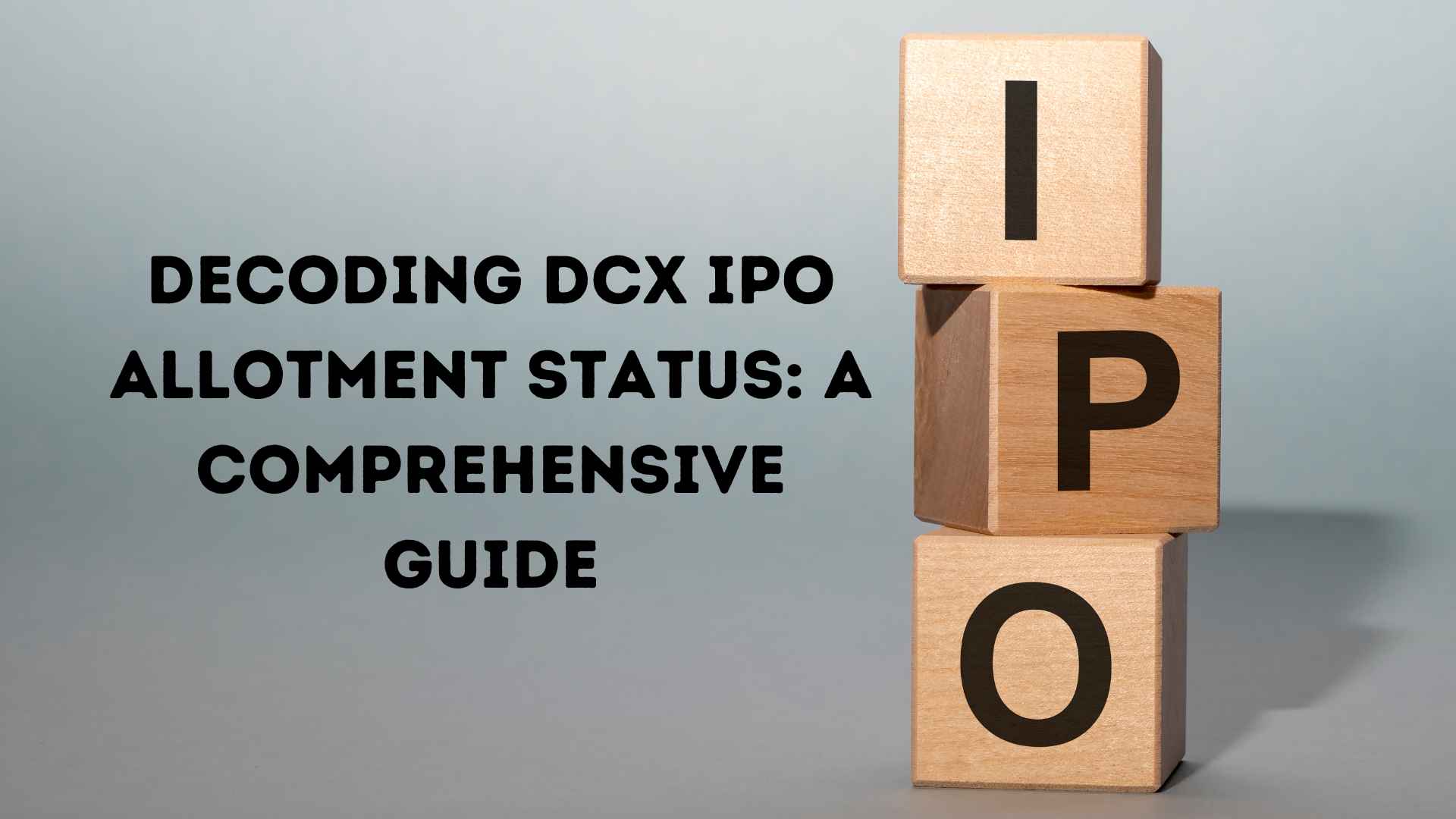Navigating The Landscape Of IPO Allotment: A Comprehensive Guide
Navigating the Landscape of IPO Allotment: A Comprehensive Guide
Related Articles: Navigating the Landscape of IPO Allotment: A Comprehensive Guide
Introduction
With enthusiasm, let’s navigate through the intriguing topic related to Navigating the Landscape of IPO Allotment: A Comprehensive Guide. Let’s weave interesting information and offer fresh perspectives to the readers.
Table of Content
Navigating the Landscape of IPO Allotment: A Comprehensive Guide
The Initial Public Offering (IPO) process, a pivotal moment in a company’s journey, involves the transition from private ownership to public trading on stock exchanges. This transition is marked by a crucial step: the allotment of shares to investors. Understanding the dynamics of IPO allotment is essential for both investors seeking to participate in this growth opportunity and companies aiming to secure the necessary funding for expansion.
Understanding the Allotment Process
The IPO allotment process is a complex mechanism designed to ensure a fair distribution of shares among investors. It involves several key stages:
-
Bidding and Demand: Investors express their interest in the IPO by submitting bids, specifying the number of shares they wish to acquire and the price they are willing to pay. This creates a demand pool for the company’s shares.
-
Price Determination: The issuing company, in collaboration with its underwriters, determines the final offer price based on the demand generated during the bidding process. This price reflects the market’s perception of the company’s value and potential.
-
Allotment: The shares are then allotted to investors based on their bids and the final offer price. Several methods are employed for allocation, including:
-
Proportional Allotment: Shares are distributed proportionally to the bids received, ensuring a fair allocation based on the amount invested.
-
Random Allotment: In cases of oversubscription (more bids than shares available), a random lottery system may be used to determine the lucky recipients.
-
Priority Allotment: Certain categories of investors, such as retail investors or employees, may be given priority in the allotment process.
-
-
Listing and Trading: Once the allotment is finalized, the company’s shares are listed on the stock exchange, making them available for public trading.
Factors Influencing IPO Allotment
Several factors influence the IPO allotment process, including:
-
Market Conditions: Overall market sentiment and investor appetite for new listings significantly impact the demand for IPO shares, influencing the final offer price and allocation.
-
Company Performance: The company’s financial performance, growth prospects, and competitive landscape all play a role in attracting investor interest and shaping the allocation process.
-
Underwriter Expertise: The underwriter’s role in managing the IPO process, including pricing and allocation, is critical to ensuring a successful and fair distribution of shares.
-
Investor Demand: The number and type of investors participating in the IPO, including institutional and retail investors, influence the final allocation of shares.
Importance of IPO Allotment
The IPO allotment process is crucial for several reasons:
-
Securing Funding: The IPO allows companies to raise capital from the public market, providing resources for expansion, innovation, and debt reduction.
-
Building Brand Awareness: The IPO process generates significant media attention and public awareness, boosting the company’s visibility and reputation.
-
Creating Liquidity: The listing of shares on a stock exchange provides liquidity for existing shareholders, enabling them to sell their holdings and realize their investment.
-
Promoting Transparency: The IPO process requires companies to disclose financial information and adhere to regulatory requirements, enhancing transparency and accountability.
FAQs on IPO Allotment
Q1: How can I increase my chances of getting shares in an IPO?
A: There is no guaranteed method to secure shares in an IPO, but certain strategies can enhance your chances. These include:
- Submitting a strong bid: Offer a competitive price and indicate a high demand for shares.
- Participating early: Submit your bid as soon as the IPO opens to increase your chances of being allotted shares.
- Utilizing multiple accounts: If permitted by the regulations, consider submitting bids from different accounts to increase your allocation potential.
Q2: What happens if I am not allotted shares in an IPO?
A: If your bid is not successful, you will not be allotted shares in the IPO. You will receive a refund of the amount you bid.
Q3: How do I know if I have been allotted shares in an IPO?
A: The issuing company or its underwriter will notify you of the allotment status through official channels, such as email, SMS, or online platforms.
Q4: What are the risks associated with investing in IPOs?
A: Investing in IPOs carries inherent risks, including:
- Volatility: IPO share prices can be highly volatile in the initial trading period.
- Overvaluation: IPOs can be overvalued, leading to potential losses for investors.
- Limited Information: New companies may have limited track records and disclosures, making it difficult to assess their true value.
Tips for Navigating IPO Allotment
- Research thoroughly: Before participating in an IPO, conduct comprehensive research on the company, its financials, and its market prospects.
- Understand the risks: Be aware of the risks associated with IPO investments, including volatility, overvaluation, and limited information.
- Diversify your portfolio: Do not invest all your capital in a single IPO, as this can expose you to significant risk.
- Consult a financial advisor: Seek guidance from a qualified financial advisor to make informed investment decisions.
Conclusion
The IPO allotment process is a complex but essential element of the public offering process. Understanding the dynamics of allocation, the factors influencing it, and the associated risks is crucial for investors seeking to participate in this exciting opportunity. By navigating the process with careful research, informed decision-making, and a balanced approach to risk, investors can potentially benefit from the growth potential of newly listed companies.








Closure
Thus, we hope this article has provided valuable insights into Navigating the Landscape of IPO Allotment: A Comprehensive Guide. We appreciate your attention to our article. See you in our next article!
You may also like
Recent Posts
- The Allure Of Cubic Zirconia: A Comprehensive Guide To Its Beauty And Versatility
- The Evolution Of Jewelry Design: Embracing The Power Of CAD
- Corfe Castle: A Journey Through Time In The English Countryside
- Restoring A Precious Symbol: Repairing A Cut Ring
- A Comprehensive Guide To Silver Jewelry In Chennai: Unveiling The City’s Silver Treasures
- A Glimpse Into Kolkata’s Golden Legacy: Exploring City Gold Jewellery
- Navigating The Landscape Of Charitable Giving: Supporting Local Communities In The Wake Of COVID-19
- Corfe Castle And Village: A Journey Through Time

Leave a Reply